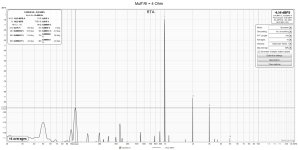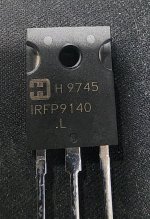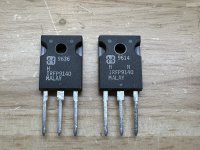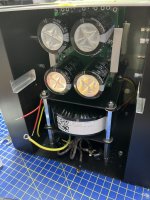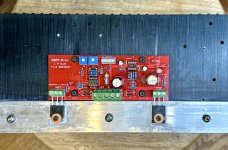Today I discovered an advantage of using SMPS vs. linear supplies for experiments. The same applies to using current limited bench supplies.
It is more about having current limiting during experiments, rather than switching or linear, not ?
One can always incorporate current limiting in any linear supply, as we did in the F5X Preamp.
Typical examples :
https://electrical.codidact.com/posts/279580
Under Section C.1.
Patrick
Even better, you can use a fold-back current limiter :
https://www.electronics-notes.com/a...upply-electronics/current-limiter-circuit.php
Only 3 transistors, gives you both voltage regulation and current limit that decreases with the amount of overload.

Patrick
https://www.electronics-notes.com/a...upply-electronics/current-limiter-circuit.php
Only 3 transistors, gives you both voltage regulation and current limit that decreases with the amount of overload.
Patrick
No offense taken. But I am actually older than Papa, but don't call me Grand-Papa.😊
My experiences with SMPS power supplies are not so positive.
In my test bed I use two Mean Well LRS-150-24-AC-DC-6.5A-156W-24-V-DC modules connected in series with virtual ground to generate dual rail +/-24V.
It turned out that this configuration produces a disturbing component with around 110 Hz.
I would have understood 100 Hz, but 110 Hz must be the beat frequency.
Is there another explanation?
In my test bed I use two Mean Well LRS-150-24-AC-DC-6.5A-156W-24-V-DC modules connected in series with virtual ground to generate dual rail +/-24V.
It turned out that this configuration produces a disturbing component with around 110 Hz.
I would have understood 100 Hz, but 110 Hz must be the beat frequency.
Is there another explanation?
Attachments
I picked up some Harris IRFP9140 from componentonline.com (https://componentonline.com/product/IRFP9140-HARRIS/IRFP9140), however, I just got them in the mail and I fear I may have gotten fakes. Anyone have a suggestion on how I can verify? My Peak Atlas DCA75 Pro probably isn't going to do a good job with them right? I'm feeling pretty dumb right now seeing them in person for the first time. 😢
Attachments
I am pretty sure I got counterfeits as you can see in my picture comparison between diyaudiostore.com (left) and componentonline.com (right).
I built the matching circuit from Nelson's article and measured Vgs at 15V with 2x 100ohm resistors in parallel. Results shown on image. I'm not sure how I "prove" they are fakes with measurements in this case. It sure seems like componentonline.com had real Harris parts and chose to send counterfeits based on @Vunce note above. We don't need to clog up the thread on this topic, but I did want to share. I definitely got burned as I bought 120 qty and if you look at the fine print they have a 30% restocking fee! Feel free to PM me if anyone has suggestions on how to proceed beyond contacting the company. Thanks!

I built the matching circuit from Nelson's article and measured Vgs at 15V with 2x 100ohm resistors in parallel. Results shown on image. I'm not sure how I "prove" they are fakes with measurements in this case. It sure seems like componentonline.com had real Harris parts and chose to send counterfeits based on @Vunce note above. We don't need to clog up the thread on this topic, but I did want to share. I definitely got burned as I bought 120 qty and if you look at the fine print they have a 30% restocking fee! Feel free to PM me if anyone has suggestions on how to proceed beyond contacting the company. Thanks!
I have both types of emblem on Harris 9240s that were bought a few years apart from reputable vendors. I suspect you have the real deal!
.. dB
.. dB
Getting along 😎Slowly building up, part by part. Trying to avoid glitches…
Attachments
I recently did another A/B set of listening tests. The tests were between an ZD25-Mini with the Fairchild FETs and 12dB global back and a second ZD25-Mini using On-Semi(?) IRFP140 and Harris IRFP9140 FETs with the RX pot adjusted for minimum H2.
With no global feedback for the IRFP FETS, there were some subtle indications of annoying third harmonics at higher frequencies on particular recordings, essentially the same as reported in post #578. without the RX pot.
With 12dB global feedback the Fairchild FETs and IRFP FETs were indistinguishable.
It appears that the reduction of H2 using the RX pot did not make any noticeable improvement to the sound.
With no global feedback for the IRFP FETS, there were some subtle indications of annoying third harmonics at higher frequencies on particular recordings, essentially the same as reported in post #578. without the RX pot.
With 12dB global feedback the Fairchild FETs and IRFP FETs were indistinguishable.
It appears that the reduction of H2 using the RX pot did not make any noticeable improvement to the sound.
In order to avoid distracting form this wonderful Holy Grail build thread, I wanted to move the conversation about "Genuine" vs "Counterfeit" MOSFETs to a new thread and allow folks to discuss and share knowledge.
Feel free to chime in here: https://www.diyaudio.com/community/...ns-learned-sharing-experiences-thread.412771/
Feel free to chime in here: https://www.diyaudio.com/community/...ns-learned-sharing-experiences-thread.412771/
Patrick is always cooking 😁🙏Our version, based on this :
https://www.diyaudio.com/community/threads/the-holy-grail-follower-output-stage.406850/post-7544362
But uses current sensing at the power supply (additonal R-C 1R 10000µF on board).
View attachment 1305329
Works first time, as expected. 🤓
Patrick
Last edited:
Not wanting to pollute this thread with a different circuit, our results are posted here :
https://www.diyaudio.com/community/...tage-perfectly-integrated.406024/post-7686147
Patrick
https://www.diyaudio.com/community/...tage-perfectly-integrated.406024/post-7686147
Patrick
Patrick is always cooking 😁🙏
The next recipe can be found here (same topology as the F5, but with Sziklai output) :
https://www.diyaudio.com/community/threads/hiraga-le-monstre-2024.413301/latest
🤓
Patrick
- Home
- Amplifiers
- Pass Labs
- The Holy Grail Follower Output Stage
